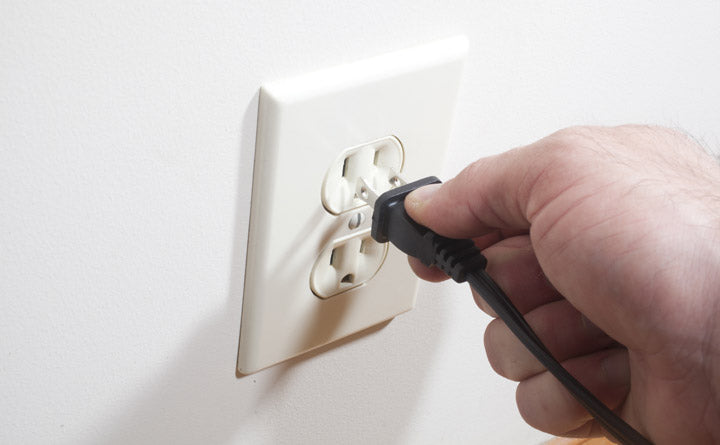The average homeowner tends to not give much thought to his or her electrical outlets unless there’s a problem. They may realize that they need to add safety covers if there are children in the home, but that’s usually the extent of the consideration that goes into these vital home components.
You depend on your electrical outlets, or ‘receptacles,’ to power everything from your hair dryer to your alarm clock at night to your phone charger.
Regardless of what exactly you use your outlets for, you need to be mindful of what kind of condition they’re in, especially if you’ve noticed any of the following warning signs which indicate it’s time for replacement.
1. PROBLEM: Your home was built before 1965.
According to the National Electric Code (NEC), all homes built after 1965 are required to have grounded, 3-prong outlets. If you are living in a home built prior to the mid-1960s, you may still have 2-prong outlets that are not grounded, and these can be very dangerous because they can cause electrical fires, shock or electrocution, and can damage appliances with unexpected power surges.
SOLUTION: An electrician will be able to safely install new GFCI (ground fault circuit interrupter) outlets in your home.
2. PROBLEM: The outlet’s faceplate is cracked, broken, or missing.
Inserting a plug into a damaged receptacle can be extremely dangerous. The electric arc generated by the insertion of the plug could shock or electrocute you. It may also cause the appliance to short-out.
SOLUTION: An electrician will replace your damaged outlet. If he or she discovers that your home has been fitted with older receptacles, they may suggest replacing all outlets at once to keep your family and appliances safe.
3. PROBLEM: The plug falls out of the outlet or feels loose.
Over time, the springs inside your outlet will wear out and plugs won’t fit inside securely. The weight of the plug may actually pull it out of the receptacle. Not only is it annoying to constantly have to plug in your lights, toaster, coffee maker, etc., but loose outlets could be fire and shock hazards as they may lead to electrical arcs and sparks shooting into your wall.
SOLUTION: An electrician will determine what, if any, damage has been done to the inside wall where the outlet is located. He or she may suggest repairs to damaged wiring or drywall panels. Additionally, they will need to install a replacement outlet.
4. PROBLEM: The outlet doesn’t work anymore.
If you have an appliance plugged in that isn’t working normally, the outlet may be “dead.” To test the outlet and make sure that it’s not the appliance experiencing problems, plug the appliance into a different outlet in the room. If the appliance works as usual, then the problem may lie in the outlet. Also, be sure to check your fuse or circuit box to be sure you don’t have a blown fuse or tripped circuit.
SOLUTION: An electrician will use an outlet tester to be sure that there isn’t any electricity present. If it’s determined that the outlet is dead, he or she will then need to replace the receptacle.
5. PROBLEM: The outlet feels warm to touch or has burn marks.
If you notice this problem in your home, the first thing you need to do is flip the circuit breaker to the “off” position for this particular outlet. Failure to do so could result in a fire or electrical shock. Be sure to call an electrician as soon as possible to diagnose and fix the problem.
SOLUTION: An electrician will be able to determine the cause of the damaged outlet. Often, this problem is a result of deteriorating wire terminals inside the outlet. When you plug an appliance into such an outlet, it can lead to electrical arcs, sparks, or overheating.
It’s important that you do not ignore problems with your home’s outlets. Failure to act at the first signs of an issue could result in serious damage to your home, appliances, or harm to your family’s safety and well-being.


